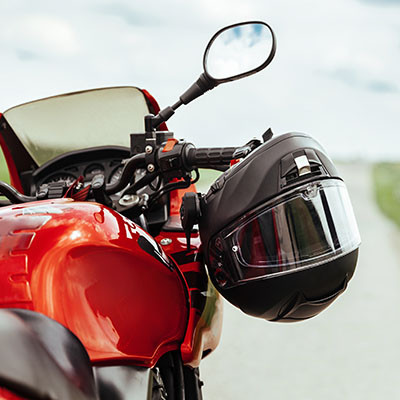The Rider Nation Blog
What to Look for in a Motorcycle Helmet
Most states have laws that require the use of a helmet while riding a motorcycle, with very few states having no such regulations on the books. This means that, chances are, you’ll need to have a helmet on while you’re riding.
Of course, not all helmets are equally safe to use. Let’s discuss the features you’ll want to seek out in your helmet to keep yourself as protected as possible.
First Off, The Type of Helmet Matters
Generally speaking, helmets can be classified as one of three types:
- Full face helmets
- ¾ helmets
- ½ helmets
Full face helmets are the safest of the three by far, as they fully cover the head and neck of the rider, as well as keep the face shielded from the assorted debris and weather conditions—a key consideration when you take the fact that 45 percent of motorcycle head impacts result in facial injuries. The chin bar that these helmets feature is another key safety measure.
You also want your helmet to have sufficient protection on the inside to help absorb shock from any impacts you may unfortunately experience, with a shell-built design as well as the aforementioned chin bar and inner lining.
Be Aware of Which Safety Standards Your Helmet Meets
There are various safety standards out there that are used to rank helmets. The first one you’d likely think of is that set by the Department of Transportation (also known as FMVSS218). This one can be seen as the minimum standard that any helmet you wear should meet, and is a legal requirement. However, other certifications exist that aren’t legally mandated, but go beyond those that are.
One notable certification of this type is the Snell Memorial Foundation certification. With significant practical testing of numerous safety features, the Snell standards (M-95/M2000) go above and beyond the DoT’s FMVSS218. This is the baseline you want your helmet to meet, provided it also passed the FMVSS218.
Try Before You Buy
Don’t hesitate to try on a few helmets to make sure they fit properly. Any helmet you wear needs to be sufficiently tight so that it doesn’t shift around on your head whether or not the strap is clasped, without any excess pressure. Be particular about your choice of helmet, it might be what saves your life.
What models of helmet do you prefer? Let us know in the comments!

 How to resolve AdBlock issue?
How to resolve AdBlock issue?

